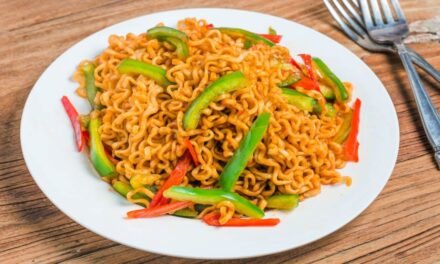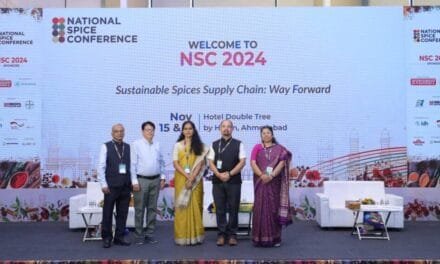MNC food processing companies are only interested in large growth opportunities instead of pursuing any new niche businesses based on local opportunities. They are also not interested in taking any local initiatives to make it big by bringing it to a global platform. Those initiatives are left to small local entrepreneurs, argues Rajat K. Baisya.
All large multinational food processing companies that are operating in India came long ago with an intention to carry on their regular established business that they had overseas in their home countries, to expand the market in India. All of them were seen to have entered the Indian market through the trading route. They were importing the product into India and selling locally. For at least a decade, they sustained this model to build a customer base. They later set up local manufacturing units to reduce costs and improve operational efficiency, a trend in line with how MNCs tackle India’s complex retail network (How FMCG Power Brands Conquer India’s Complex Retail Network).
Higher productivity and lower costs enabled them to boost profits. Most of these companies had expats in key positions like MD or CMD, supported by local senior staff—often English-educated individuals from upper-middle-class backgrounds—seen as “trusted locals.”
Over time, these foreign players became dominant forces in their categories. Companies like Britannia (biscuits), Nestle (dairy), Cadbury (now Mondelez for chocolates), Lipton and Brook Bond (tea/coffee), and Pepsi/Coca-Cola (beverages) established leadership. Some entered via acquisitions—Heineken and SAB Miller in beer, Diageo in spirits, and HUL in food and beverages. For more on key players, see Top 20 Indian Food & Beverage Companies in 2025.
In the course of time, all these foreign food processing companies became very big in their respective categories and also became the market leaders. Thus, we see the emergence of companies like Britannia in the biscuit, Nestle in dairy, Cadbury (now Mondelez) in chocolates, Lipton, Brook Bond in tea, coffee, Coca Cola and Pepsi Cola in soft beverages, Horlicks from GSK on health beverages, etc. Those who were late entrants followed the route of acquisition of well-performing Indian companies, and most often the local market leader. In that list of foreign companies, we have Heineken and SAB Miller in beer, Diageo in spirits, HUL in food processing and beverages, etc.
But one thing is uniformly true: global players with a significant presence in a product category have only pursued their own main line of business.
Another thing was very apparent that we have witnessed that whenever these large multinationals have decided to diversify and were looking at new growth opportunities they were invariably seen as entering into large existing business categories to take away a chunk of the market share from the competition by resorting to product differentiation supported by high pitch advertisement and promotional budget.
Thus, we have seen Horlicks and Cadbury’s as well as ITC entering biscuit as new growth categories. Horlicks introduced Horlicks biscuits and ITC Sunfeast biscuits. They were slogging it out and locked themselves in a long, drawn-out fight in the marketplace. As we have seen, ITC got into all large volume food categories, including instant noodles, etc. (10 Best Instant Noodles Brands in India) We have also seen that some of them made it a success story—for example, Mondelez is now a significant player in the biscuit industry. Orio biscuits are a great success story. (From Parle-G to Oreo: Top 10 Biscuit Brands in India).

We can draw two conclusions from what I have stated so far. One, that MNC food processing companies are only interested in pursuing their own business and brands and making them bigger. Second, MNC food companies are only interested in large growth opportunities instead of seeking any new niche businesses based on local opportunities. They are also not interested in taking any local initiatives to make it big by bringing that to a global platform. Those initiatives are left to small local entrepreneurs. And as local start-ups have limited access to resources their endeavours also have not seen to be becoming a big global category. (How to Get Government Subsidy for Small Food Business in India).
India-made foreign liquor (IMFL) is a big business category, which Indian players once controlled, is now in the hands of global MNCs. This is a restricted category controlled by regulations on advertisements, promotion, storage, and distribution, but it is still growing. The reason is understandable. The prices of IMFL are high and beyond the reach of the poor and working-class, whose only entertainment is to get a kick and forget about their daily misery and hardships. They illegally brew their concoction, and often unscrupulous people supply illicit and spurious spirits with dire consequences. In the recent past, we have had two such major incidents – one in Madhya Pradesh and another in Assam, where more than a hundred innocent poor tea garden workers lost their lives.

There, the country liquor is available through the registered vendors to cater to the poor working class,, but those are also out of reach of the poor and therefore, we still witness such havoc once in a while, but almost at regular intervals. There is liquor production locally from Mahua flower, which grows in Odisha, Madhya Pradesh, Jharkhand, Bastar, Chhattisgarh, Goa and Maharashtra, and I wonder why state cooperative marketing federations are not producing potable liquor in these states and distributing it through their local distribution infrastructure. (Agro Processing Centres for Durable Crops).
I also wonder why there is no organised effort to produce new alcoholic beverages from Mohua by large companies to take the product to other overseas markets. This is a distinct possibility, but no organised effort. Why does a company like ITC, which earns 80% of its profit from the cigarette and tobacco business, not even think about such possibilities instead of only pushing new brands in existing large categories like biscuits and noodles? What is the big endeavour on the part of a company like ITC to sell wheat flour (atta), rice, and oil? The answer is also known.
No one wants to venture out of their comfort zone. It takes a long, dedicated effort to develop a new category of business out of nothing, but if big companies try, then the success rate will be higher simply because they have more resources and sustaining power. An alternative to that is the effort that the public and the cooperative sector can trigger. And that is also missing.
New generation entrepreneurs are seen to be more innovative and willing to try out anything new. Very recently in Bangalore, at a wine tasting event hosted by Eleven Thirtyone Restobar, guests were seen to gulp down shots of Mahua, a drink synonymous with country liquor in rural India. This particular flower-distilled variety of the spirit was from Goa and is now available on the shelves of premium bars in Karnataka. This is a significant development. Karnataka is a tough market, and if the experiment succeeds, there will be the popularity of this new indigenous drink, and with sustained effort, this can reach other markets and even overseas markets. (Indian Traditional Foods: Missed Opportunity for Start-ups and Export Promotion).
Liquor is an easier category to sell. If people like it, it will move. Our agricultural state marketing federation can learn lessons from this. They could not sell traditional fruit and vegetable products, but Mohua liquor will be easier to sell if they can put their act together. The owner of Alcobev company, Desmond Nazareth, is making an effort to popularise Mohua distilled alcoholic beverages. Hopefully, he succeeds. There are other such local varieties also available in some states, like rice beer in Arunachal Pradesh. If Saki can be a popular rice-based alcoholic drink from Japan, why not Mohua from India?
The author is the chairman of Strategic Consulting Group and served as Professor and Head of the Department of Management Studies, IIT Delhi.
Have a news or topic to share with industry? Write to us editorial@pfionline.com

















